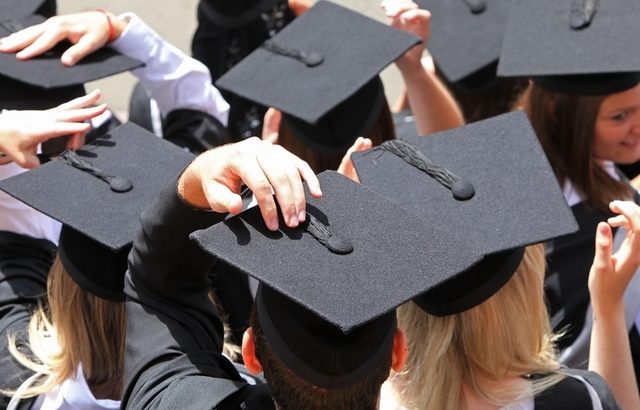Fuente: edweek / 8 de junio de 2016
New federal civil rights data released Tuesday show that black and Latino high school students are being shortchanged in their access to high-level math and science courses that could prepare them for college.
An early preview of the latest U.S. Department of Education’s Civil Rights Data Collection, based on the 2013-14 school year, lays out sharp racial and ethnic disparities in access to challenging high school courses:
Calculus offered in:
- 33 percent of high schools with high black and Latino enrollment
- 56 percent of high schools with low black and Latino enrollment
Physics offered in:
- 48 percent of high schools with high black and Latino enrollment
- 67 percent of high schools with low black and Latino enrollment
Chemistry offered in:
- 65 percent of high schools with high black and Latino enrollment
- 78 percent of high schools with low black and Latino enrollment.
Algebra 2 offered in:
- 71 percent of high schools with high black and Latino enrollment
- 84 percent of high schools with low black and Latino enrollment.
Particular inequities emerge when looking at course access by race and ethnicity. But there are many neighborhoods where those courses aren’t available to anyone, the civil rights data show.Only 48 percent of the country’s high schools offer calculus, 60 percent offer physics, 72 offer chemistry, and 78 percent offer Algebra 2.
The numbers are among the first batch to emerge from the Civil Rights Data Collection, which is conducted every two years. The federal education department’s Office for Civil Rights released a 13-page preview of a small slice of the information it uncovers in mandatory surveys of a huge swath of the U.S. K-12 system: 99 percent of schools and districts, representing 50 million students.
For more from EdWeek on what this early batch of data found, see this story by Evie Blad and this post by Sarah Sparks. In addition to the findings on college readiness, today’s data covers school discipline, the use of restraint and seclusion, early learning, chronic absenteeism, teachers and staffing, and education in justice facilities.
Many more results of the survey, which is intended to gauge how well schools and districts are providing equal opportunity to education as required by federal law, will be released this summer. Much of it will update previous releases, such as the ones we brought you in 2014 (which included the question of access to high-level courses). But there will be new elements covered this time, too, such as student access to distance education, credit-recovery and dual enrollment programs.
Today’s data also shows patterns in Advanced Placement enrollment by race, ethnicity, disability, and native language. For instance: English-learners represent 5 percent of the students in schools that offer AP courses, but only 2 percent of those actually enrolled in one or more of AP courses, the federal data show.
Black and Latino students are 38 percent of the students in schools offering AP, but only 29 percent of those enrolled. Students with disabilities under the Individuals with Disabilities Education Act represent 11 percent of the students in schools offering AP, but less than 2 percent of those taking such a class.
The federal data also showed that students who are multiracial, black, Latino, Native American, Native Alaskan, or Native Hawaiian, are more likely than students of other racial or ethnic descent to be held back a grade in high school. Students with disabilities and English-learners are also held back disproportionately.
Get High School & Beyond posts delivered to your inbox as soon as they’re published. Sign up here. Also, follow @cgewertz for news and analysis of issues that shape adolescents’ preparation for work and higher education.







 Users Today : 22
Users Today : 22 Total Users : 35460153
Total Users : 35460153 Views Today : 36
Views Today : 36 Total views : 3418819
Total views : 3418819